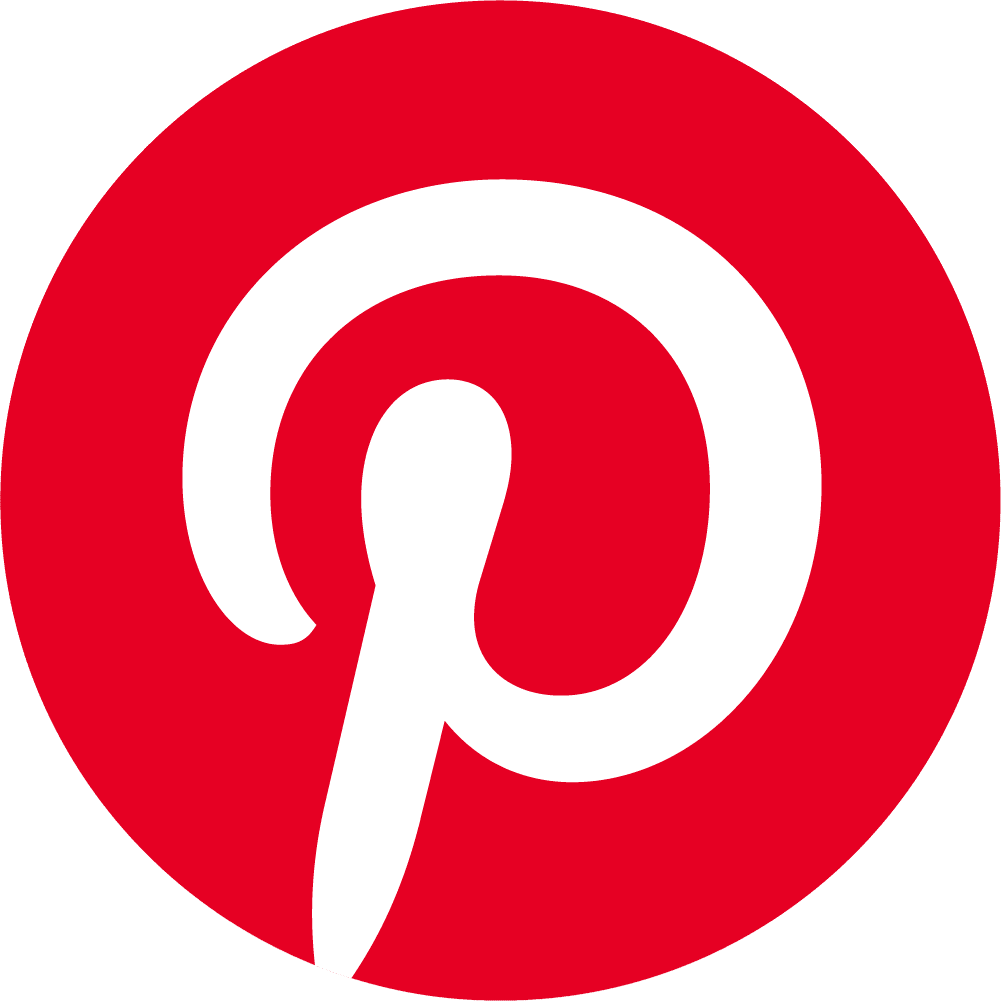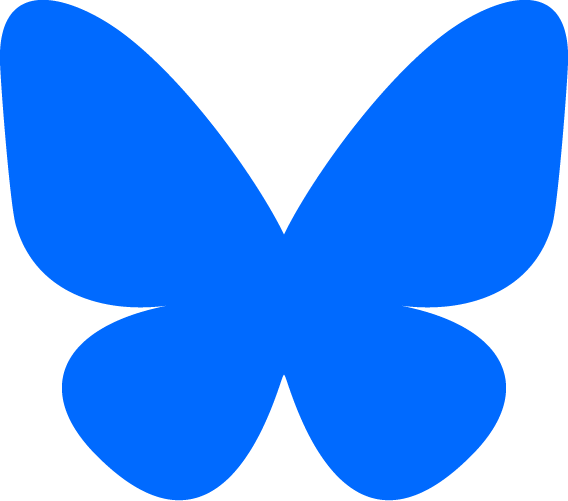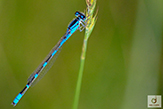Minnesota Damselflies
Order Odonata
Odonata is the order of insects that is distinguished by a number of morphological features. Adults have minute antennae; extremely large eyes that fill most of the head; two pairs of transparent, membranous wings with many small veins; and a long slender abdomen. Nymphs (larval stage) have posterior tracheal gills and a prehensile labium (extendible jaws underneath the head). The order includes dragonflies and damselflies.
There are about 6,000 Odonata species in about 600 genera in 29 families worldwide, about 460 species in 92 genera in 12 families in North America north of Mexico. Odonata Central lists 151 Odonata species in Minnesota.
Suborder Zygoptera
The order Odonata is separated into two groups: Anisoptera/Anisozygoptera group (dragonflies); and the suborder Zygoptera (damselflies). Damselflies are similar to dragonflies but are smaller; the bodies are more slender; the heads are much wider than long (hammer-headed); the compound eyes are separated by at least the width of the eye; the forewings and hindwings are similar in size and shape and are held over the body or at a 45° angle when at rest; the flight is weak and fluttering; and the ovipositor is functional.
There are about 2,942 still surviving (extant) damselfly species in 309 genera in 27 families worldwide. In North America north of Mexico there are 136 species in 22 genera in 5 families. In the Upper Midwest (Minnesota, Wisconsin, and Michigan) there are 46 species in 3 families. There are at least 42 damselfly species in Minnesota.

Recent Additions
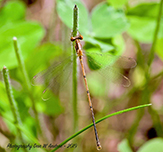
Slender spreadwing (Lestes rectangularis) is one of the most common and one of the most easily recognized damselflies in Minnesota. It occurs in the United States from the East Coast to the Great Plains and in adjacent Canadian provinces. It is found in partially shaded areas in marshes, ponds, lakes, and still backwaters of slow streams.
Adults are about 1½″ to 2″ long. The male thorax is dark brown with yellow sides and wide blue or gray shoulder stripes. The abdomen is dark brown above, yellow on the sides, and extremely long, about twice as long as the wings. The wings are clear with a dark spot near the tip and a pale vein around the tip. The female is similar but has light brown shoulder stripes on the thorax and a shorter and stockier abdomen.
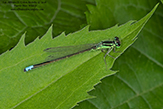
Eastern forktail (Ischnura verticalis) is a small, narrow-winged damselfly. It occurs east of the Rocky Mountains from Quebec and Georgia in the east to Manitoba and New Mexico in the west. It is very common in the northeast and Midwest, present but uncommon in the southern tier of states. It is abundant in Minnesota, where it has been reported in 81 of the state’s 87 counties.
Eastern forktail has three color variations. Adult males are mostly black with green eye spots and pale blue shoulder stripes, sides of the thorax, and tip of the abdomen. Adult females are entirely pale powdery blue with larger blue eyespots and few other noticeable markings. Immature females are black with orange markings.
Eastern forktail may be the most common damselfly in our area, as it is reported to be in and around Chicago.
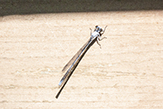
Powdered dancer (Argia moesta) is a common and widespread, medium to large sized damselfly. At 1½″ to 1¾″ it is the largest dancer damselfly and the largest narrow-winged or pond damselfly. It can be found from early June to early September on streams and rivers with emergent rocks and large lakes with rocky shores.
Unlike American bluet damselflies, dancer damselflies are easy to identify in the field by their colors and the pattern of their markings. Powdered dancer is distinguished by the whitish pruinescence on the male, a characteristic unique among Minnesota damselflies. The female is similar to the blue-fronted dancer but is larger and has a paler abdomen tip.
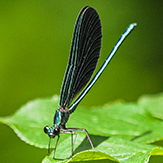
Ebony jewelwing (Calopteryx maculata) is a large, showy, broad-winged damselfly. It can be found from late May to early September near shallow, small to medium-sized, canopy covered forest streams and adjacent shaded areas. Adults live on average for 16 to 20 days. They are often noticed in large numbers but for only a short period and then sporadically or not at all until the next year.
Jewelwings in Minnesota are identified by the broad, partially or wholly black wings; and on the female the small white patch near the tip of each wing. This species is identified by the brilliant metallic green or blue body; the broader, wholly black wings that are 3 times as long as wide; and the wider white patch near the wing tip of the female.
Other Recent Additions
This list includes only damselflies that have been recorded in Minnesota, but not all of the damselflies found in Minnesota.
| Profile | Photo | Video | |||
|---|---|---|---|---|---|
alkali bluet (Enallagma clausum) |
|
||||
amber-winged spreadwing (Lestes eurinus) |
|||||
American rubyspot (Hetaerina americana) |
|||||
aurora damsel (Chromagrion conditum) |
|||||
azure bluet (Enallagma aspersum) |
|||||
blue-tipped dancer (Argia tibialis) |
|||||
boreal bluet (Enallagma boreale) |
|||||
citrine forktail (Ischnura hastata) |
|||||
eastern red damsel (Amphiagrion saucium) |
|||||
elegant spreadwing (Lestes inaequalis) |
|||||
emerald spreadwing (Lestes dryas) |
|||||
fragile forktail (Ischnura posita) |
|||||
Hagen’s bluet (Enallagma hageni) |
|||||
lyre-tipped spreadwing (Lestes unguiculatus) |
|||||
northern spreadwing (Lestes disjunctus) |
|||||
orange bluet (Enallagma signatum) |
|||||
pond spreadwings (Lestes spp.) |
|||||
rainbow bluet (Enallagma antennatum) |
|||||
river bluet (Enallagma anna) |
|||||
sedge sprite (Nehalennia irene) |
|||||
skimming bluet (Enallagma geminatum) |
|||||
southern spreadwing (Lestes australis) |
|||||
sphagnum sprite (Nehalennia gracilis) |
|||||
spreadwings and allies (Family Lestidae) |
|||||
stream bluet (Enallagma exsulans) |
|||||
subarctic bluet (Coenagrion interrogatum) |
|||||
swamp spreadwing (Lestes vigilax) |
|||||
sweetflag spreadwing (Lestes forcipatus) |
|||||
taiga bluet (Coenagrion resolutum) |
|||||
vesper bluet (Enallagma vesperum) |
|||||
violet dancer (Argia fumipennis violacea) |
Amphiagrion saucium (eastern red damsel)
Argia apicalis (blue-fronted dancer)
Argia fumipennis violacea (violet dancer)
Argia moesta (powdered dancer)
Argia tibialis (blue-tipped dancer)
Calopteryx aequabilis (river jewelwing)
Calopteryx maculata (ebony jewelwing)
Chromagrion conditum (aurora damsel)
Coenagrion interrogatum (subarctic bluet)
Coenagrion resolutum (taiga bluet)
Enallagma anna (river bluet)
Enallagma annexum (northern bluet)
Enallagma antennatum (rainbow bluet)
Enallagma aspersum (azure bluet)
Enallagma boreale (boreal bluet)
Enallagma carunculatum (tule bluet)
Enallagma civile (familiar bluet)
Enallagma clausum (alkali bluet)
Enallagma ebrium (marsh bluet)
Enallagma exsulans (stream bluet)
Enallagma geminatum (skimming bluet)
Enallagma hageni (Hagen’s bluet)
Enallagma signatum (orange bluet)
Enallagma vesperum (vesper bluet)
Hetaerina americana (American rubyspot)
Ischnura hastata (citrine forktail)
Ischnura posita (fragile forktail)
Ischnura verticalis (eastern forktail)
Lestes australis (southern spreadwing)
Lestes congener (spotted spreadwing)
Lestes disjunctus (northern spreadwing)
Lestes dryas (emerald spreadwing)
Lestes eurinus (amber-winged spreadwing)
Lestes forcipatus (sweetflag spreadwing)
Lestes inaequalis (elegant spreadwing)
Lestes rectangularis (slender spreadwing)
Lestes spp. (pond spreadwings)
Lestes unguiculatus (lyre-tipped spreadwing)
Lestes vigilax (swamp spreadwing)
Lestidae (spreadwings and allies)
Nehalennia gracilis (sphagnum sprite)
Nehalennia irene (sedge sprite)
No Species Page Yet?
If you do not see a linked page for a species in the list at left you can still upload a photo or video or report a sighting for that species. Click on one of the buttons below and type in the common name and/or scientific name of the species in your photo, video, or sighting. A new page will be created for that species featuring your contribution.
These buttons not working for you?
Simply email us at info@MinnesotaSeasons.com.
Capitalization of Common Names
Insect scientific names are governed by the International Commission on Zoological Nomenclature (ICZN). Vernacular (common) names are not. In an attempt to “assure the uniformity of (common) names of common insects” the Entomological Society of America (ESA) published Common Names of Insects and Related Organisms. ESA has no rule or guideline that addresses capitalization of common names. However, the database of common names published by ESA does not capitalize common names. Most other sources, including ITIS, BAMONA, Odonata Central, and the Peterson Field Guides, capitalize common insect names. MinnesotaSeasons.com will adhere to the convention followed by ESA.

